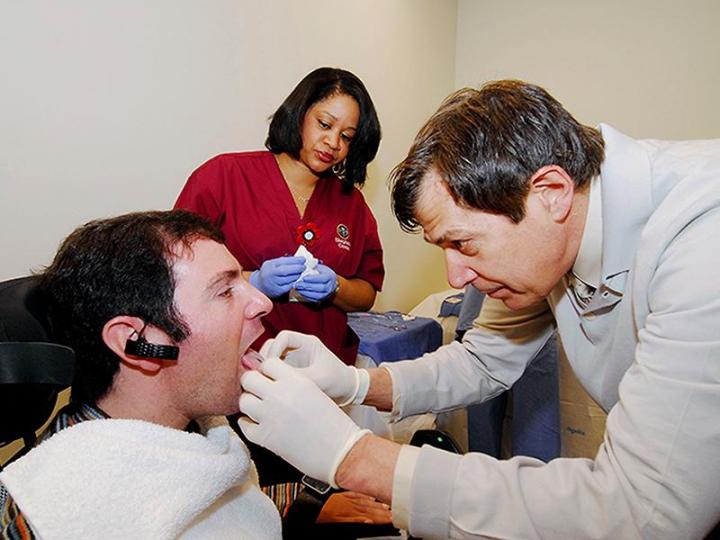
A new experimental device is being tested by paralyzed wheelchair users to move around and control other equipment. The magnetic piercing acts like a miniature joystick and could eventually give disabled people with restricted movements much more independence.
Research teams from Atlanta and Chicago coordinated by staff at the Georgia Institute of Technology have developed the Tongue Drive System, which uses wireless technology to pass communications between the stud piercing and other devices such as a wheelchair or a computer. It could provide a viable alternative to the existing sip-and-puff control system, where users must blow into a straw to make their intentions known.
A group of patients paralyzed from the neck down have been testing the new tongue-operated system by maneuvering their wheelchairs through a variety of obstacle courses. The gadget has also been used to control a PC. “It’s really powerful because it’s so intuitive,” said Jason DiSanto, 39, of Atlanta, who is one of the testers. “The first time I did it, people thought I was driving for, like, years.”
Details of the research have been published in the Science Translational Medicine journal, where they have attracted plenty of attention from fellow medical experts. “For people who have very limited ability to control a power wheelchair, there aren’t that many options,” said Dr. Brad Dicianno, a rehabilitation specialist at the University of Pittsburgh Medical Center. “There is some interesting promise for this tongue control.”
For now, the technology can only be used within laboratories. Larger, outdoor studies are required before the device can start on the road to being a genuine product available for sale. The system was created by biomedical engineer Maysam Ghovanloo, who said the natural versatility of the tongue piercing gave it an advantage over other systems: “It’s unobtrusive, easy to use and flexible,” said Ghovanloo. The tongue doesn’t require special concentration to use and doesn’t get tired easily.
All of the 11 paralyzed volunteers who tried the new tongue stud piercing said they preferred it to existing technology by the end of the testing program, though a tongue piercing isn’t for everyone, and some disabled users refused to take part in the test when asked.
DiSanto, however, has signed up for the next round: “Somebody that’s in a wheelchair already has a stigma.If there was something that could be developed to control my wheelchair and the environment around me, to make me more independent without having to have medical devices coming out of my mouth, it would be a huge benefit.”


